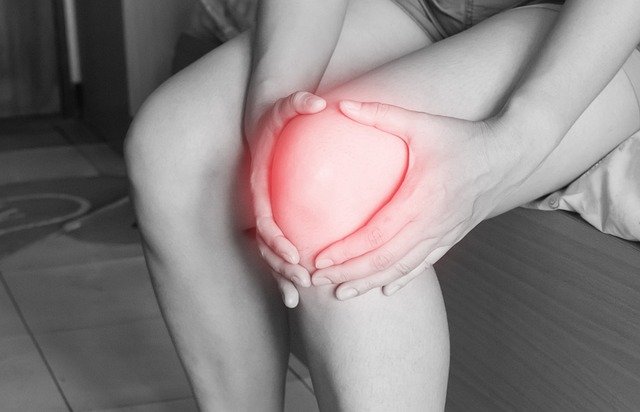Knee Pain: A Practical Guide for Awareness
Knee pain affects millions of people worldwide, limiting mobility and decreasing quality of life. Whether caused by injury, arthritis, or overuse, understanding available treatment options helps manage discomfort and restore function. From conservative approaches to advanced therapies, multiple solutions exist for addressing knee pain at various stages and severity levels.

What are the common causes of knee pain?
Understanding the causes of knee pain is the first step towards effective management and treatment. Knee pain can result from a variety of factors, including:
-
Injuries: Ligament tears, meniscus damage, and fractures are common knee injuries that can cause significant pain.
-
Arthritis: Osteoarthritis, rheumatoid arthritis, and gout can all lead to knee pain and inflammation.
-
Overuse: Repetitive stress on the knee joint, often seen in athletes or individuals with physically demanding jobs, can result in conditions like tendinitis or bursitis.
-
Obesity: Excess weight puts additional stress on knee joints, potentially leading to pain and accelerated wear and tear.
-
Age-related changes: As we age, the cartilage in our knees may naturally wear down, leading to increased friction and pain.
Identifying the underlying cause of knee pain is crucial for determining the most appropriate treatment approach.
Which physical therapy exercises can help alleviate knee pain?
Physical therapy plays a vital role in managing knee pain and improving joint function. Here are some exercises that may be beneficial:
-
Straight leg raises: Strengthen the quadriceps muscles without putting excessive stress on the knee joint.
-
Hamstring curls: Improve flexibility and strength in the muscles behind the thigh.
-
Wall squats: Build strength in the quadriceps, hamstrings, and glutes while maintaining proper knee alignment.
-
Step-ups: Enhance stability and strength in the legs and knees.
-
Stationary cycling: Provide low-impact cardiovascular exercise while improving knee range of motion.
It’s important to note that these exercises should be performed under the guidance of a qualified physical therapist or healthcare professional to ensure proper form and avoid exacerbating existing conditions.
What natural remedies and lifestyle modifications can help manage knee pain?
In addition to medical treatments and physical therapy, several natural remedies and lifestyle changes can help alleviate knee pain:
-
Weight management: Maintaining a healthy weight reduces stress on the knee joints.
-
Low-impact exercises: Activities like swimming, cycling, or using an elliptical machine can help maintain fitness without putting excessive strain on the knees.
-
Hot and cold therapy: Applying heat or cold packs can help reduce pain and inflammation.
-
Proper footwear: Wearing supportive shoes with good arch support can help alleviate knee stress.
-
Glucosamine and chondroitin supplements: These may help reduce pain and improve joint function in some individuals, although scientific evidence is mixed.
-
Anti-inflammatory diet: Consuming foods rich in omega-3 fatty acids and antioxidants may help reduce inflammation in the body.
Implementing these lifestyle modifications alongside medical treatments can contribute to better knee health and reduced pain.
When might surgical treatment for knee pain be necessary?
While many cases of knee pain can be managed with conservative treatments, some situations may require surgical intervention. Indicators that surgery might be necessary include:
-
Severe pain that significantly impacts daily activities and quality of life.
-
Failure to respond to conservative treatments after several months.
-
Instability in the knee joint that affects mobility and increases the risk of falls.
-
Advanced arthritis with significant joint damage visible on imaging studies.
-
Ligament or meniscus tears that do not heal with non-surgical treatments.
-
Deformities in the knee joint that affect proper alignment and function.
It’s crucial to consult with an orthopedic specialist to determine if surgery is the best option based on individual circumstances and medical history.
How can diet impact knee pain management?
Diet plays a significant role in managing knee pain, particularly through its effects on inflammation and weight management. Here are some dietary considerations for individuals living with knee pain:
Foods to consider:
-
Omega-3 rich fish (salmon, mackerel, sardines)
-
Colorful fruits and vegetables (berries, leafy greens, bell peppers)
-
Nuts and seeds (walnuts, chia seeds, flaxseeds)
-
Whole grains
-
Lean proteins
Foods to avoid or limit:
-
Processed foods high in trans fats
-
Sugary foods and beverages
-
Red meat and processed meats
-
Refined carbohydrates
-
Alcohol
By incorporating anti-inflammatory foods and limiting those that may exacerbate inflammation, individuals may experience reduced knee pain and improved overall joint health.
Knee pain is a complex issue that requires a multifaceted approach to management and treatment. By understanding the causes, exploring various treatment options, and making lifestyle modifications, individuals can take proactive steps towards alleviating knee pain and improving their quality of life. Remember that each case of knee pain is unique, and it’s essential to work closely with healthcare professionals to develop a personalized treatment plan that addresses individual needs and circumstances.
This article is for informational purposes only and should not be considered medical advice. Please consult a qualified healthcare professional for personalized guidance and treatment.




